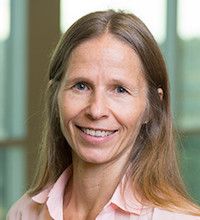Multidisciplinary Pulmonology Clinic Improves Low-Income Patient Access
Over 16 months, a greater rate of patients reported returning visits, proper inhaler use understadning, and overall satisfcation.

Lisa C. Cicutto, PhD
A comprehensive multi-disciplinary clinic that is designated for low-income and homeless patients with respiratory disease has decreased no-show rates in its population while providing care that’s been considered highly satisfying.
The detailed successes of the Comprehensive Respiratory Care Clinic (CRCC) at National Jewish Health were shared at the 2018 American Thoracic Society (ATS) International Conference in San Diego, CA this week. Led by author Lisa C. Cicutto, PhD, of National Jewish Health in Denver, CO, researchers reported new standards of care for patients with conditions like uncontrolled asthma and chronic obstructive pulmonary disease (COPD) who were lacking little to no clinical attention prior.
Cicutto said low-income individuals suffering from respiratory have differing needs that extend beyond primary diagnoses, as access to specialty care, health care sites, and knowledge to effective self-care strategies may be limited.
“We wanted to create a clinic model that provides quality, seamless care that integrates primary and specialty care for low-income individuals who have these challenges, and make sure they don’t fall between the cracks of the healthcare system,” Cicutto said.
The research team initiated CRCC development with clinical training for 2 patient navigators, 2 nurses, a nurse practitioner (NP), a pulmonologist medical director, and 8 rotating pulmonologists. Results were evaluated by quality of care, patient and provider satisfaction, process of care sheets, and aggregate reports from electronic databases. Researchers implemented a continuous quality improvement process.
CRCC was developed with perspectives taken from an environmental scan review of literature, focus groups, and key informant interviews.
Participants were pulled from 10 stakeholder health organizations that focus on low-income and medically underserved populations for the key informant or focus group interviews. Researchers identified best practices such as the creation of interdisciplinary care teams; the use of team huddles; strategies that identify high-risk patients; avoidance of scheduling patient visits beyond 4 weeks; general overbooking of visits; and providing walk-in services.
Coordination and communication strategies implemented included implementing a CRCC communications point-person to work between primary care physicians and specialists; near-immediate written communication regarding visits; more clinically-effective consult notes; quick specialty consult access; and formation of care partnerships.
As of the study’s presentation at ATS, CRCC provided 1094 visits to 390 adults. Over 16 months, the clinic reported a no-show decrease from 50% at baseline to a mean 15% (QR 11-50). Favorable patient satisfaction — gauged on a point scale up to 5 — also improved from 4.4 (90%) at baseline to a mean 4.8 (95%) over 16 months (QR 4.4-4.9).
Researchers also set goals to improve patient at-home practices, such as proper inhaler technique, which at baseline was only prevalent in 50% of patients. At 16 months, a mean 87% of patients reported proper technique (QR 50-97). Up-to-date vaccinations, including the flu and pneumococcal strains, improved from 9% of the population to 61% (QR 9-62).
In addressing income restrictions, researchers also reported an improvement of financial assistance for patients that resulted in access to medicines and equipment. While just 50% of patients benefitted from access at baseline, 90% were receiving access at 16 months (QR 50-95).
Researchers concluded that comprehensive, multi-disciplinary teams can improve patient return rates while also improving their treatment satisfaction. They indicated analysis on CRCC’s effects on urgent care visits and hospitalizations will be reported later at ATS.
Cicutto believes clinics from other cities can apply elements of the program to see similar results — though with their own tailored approach.
“This includes understanding the needs of the local community and identifying strategies that will work with the local scene,” Cicutto said. “Every community has challenges and strengths that need to be understood to inform and evaluate implemented strategies.”
Click here to sign up for more MD Magazine content and updates.